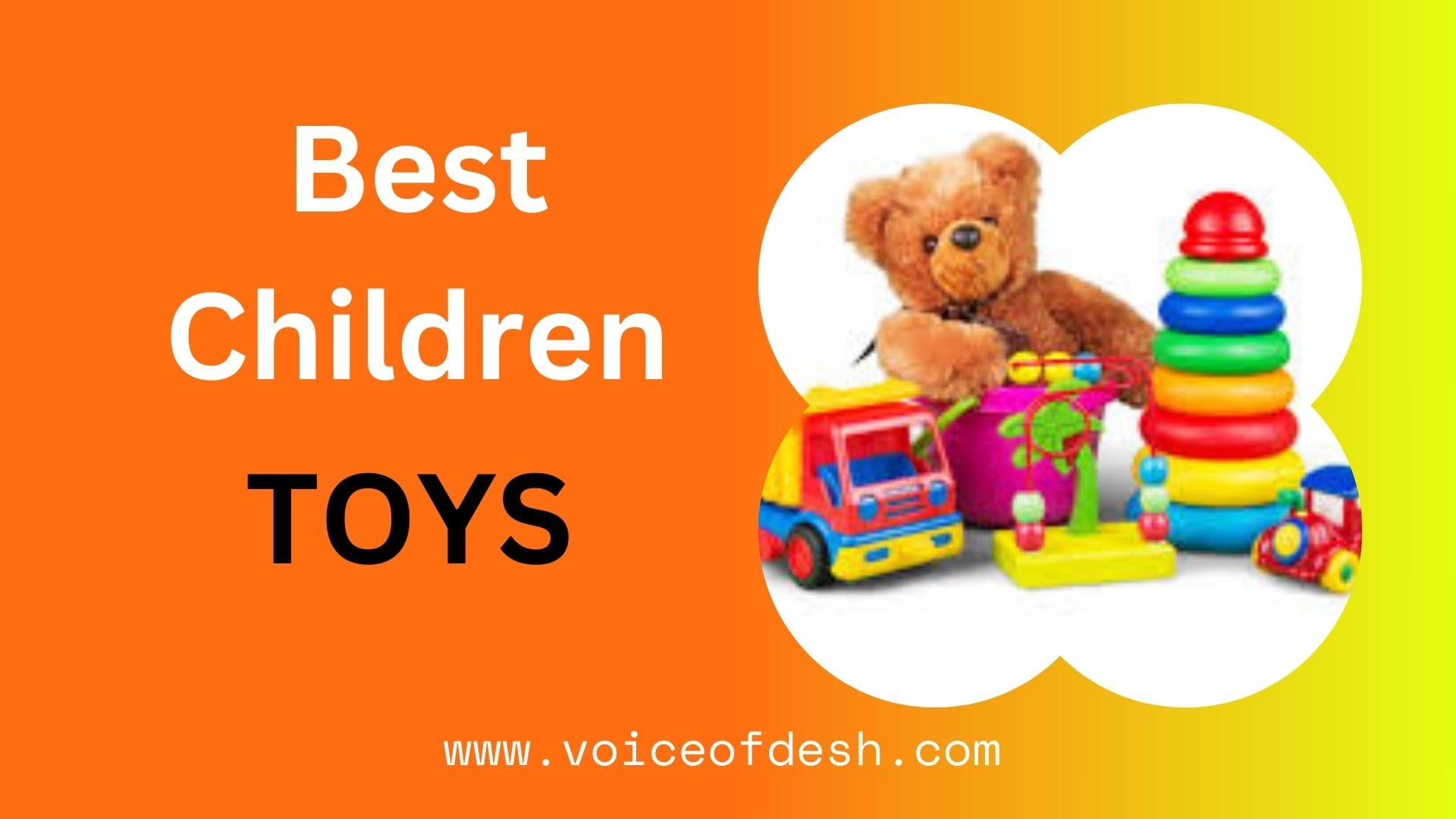The Importance of Play: How Children’s Toys Foster Development
Introduction
Children’s toys are more than just objects for entertainment; they play a crucial role in a child’s development. From cognitive growth to emotional well-being, toys offer a variety of benefits.
Cognitive Development
Toys like puzzles and building blocks encourage critical thinking and problem-solving skills. They stimulate a child’s imagination and help them understand spatial relationships.
Social Skills
Playing with toys often involves cooperation and sharing. Group games and playsets help children learn to work together, communicate, and develop empathy.
Motor Skills
Manipulative toys, such as action figures and craft kits, enhance fine motor skills. These activities improve hand-eye coordination and dexterity.
Emotional Growth
Toys also provide a means for children to express their emotions. Stuffed animals and dolls can serve as comfort objects, helping kids process their feelings.
Conclusion
Choosing the right toys can significantly impact a child’s growth and development. Investing in quality toys can provide both fun and educational value.
Article 2: Top 5 Must-Have Toys for Every Child
Introduction
With so many toys available, it can be overwhelming for parents to choose the best ones for their children. Here are five must-have toys that are sure to delight and engage kids of all ages.
1. Building Blocks
Building blocks promote creativity and engineering skills. They allow children to construct their own designs, fostering imagination and critical thinking.
2. Art Supplies
Crayons, markers, and craft kits provide endless opportunities for creative expression. Art encourages fine motor development and boosts self-esteem.
3. Educational Games
Games that challenge math, reading, or logic skills make learning fun. Look for age-appropriate board games that can be enjoyed by the whole family.
4. Outdoor Toys
Bicycles, scooters, and sports equipment encourage physical activity and promote a healthy lifestyle. Outdoor play is essential for both physical and mental well-being.
5. Dolls and Action Figures
These toys foster imaginative play and storytelling. They help children explore social situations and develop empathy through role-playing.
Conclusion
Investing in a diverse range of toys can enrich a child’s play experience and support their overall development.
Article 3: The Evolution of Children’s Toys: Trends Through the Years
Introduction
Children’s toys have evolved significantly over the decades. Understanding these trends can provide insights into how play reflects cultural shifts and technological advancements.
Vintage Toys
In the past, toys were often simple and made from wood or cloth. Classics like spinning tops and marbles focused on basic motor skills and imaginative play.
The Rise of Educational Toys
The late 20th century saw a surge in educational toys aimed at enhancing learning. Products like LeapFrog and VTech became popular for their focus on early childhood education.
Technology-Driven Toys
The 21st century has introduced tech-savvy toys like robots, coding kits, and interactive dolls. These toys combine entertainment with learning, preparing kids for a digital world.
Sustainable Toys
In recent years, there’s been a growing trend toward eco-friendly toys. Parents are seeking sustainable materials, such as bamboo and recycled plastics, to reduce their environmental impact.
Conclusion
As societal values change, so too do the toys that children play with. Staying informed about these trends can help parents make better choices for their kids.
Article 4: Safety First: Choosing Safe Toys for Children
Introduction
When it comes to children’s toys, safety is paramount. Ensuring that toys are safe can prevent accidents and injuries while promoting a secure play environment.
Understanding Age Ratings
Always check the age recommendations on toy packaging. Toys designed for older children may pose choking hazards to younger kids.
Material Safety
Look for toys made from non-toxic, BPA-free materials. Avoid toys with sharp edges or small parts that could pose risks.
Regular Inspections
Regularly inspect toys for wear and tear. Broken toys can become hazardous, so it’s essential to discard or repair them promptly.
Educating Children
Teach children about the safe use of their toys. Encourage them to handle toys carefully and to understand the importance of following safety guidelines.
Conclusion
Choosing safe toys requires diligence and awareness. Prioritizing safety ensures a fun and secure play experience for children.

Article 1: The Benefits of Playing Games for Kids
Introduction
Games are not just fun; they are crucial for children’s development. From cognitive skills to social interaction, the benefits of play are numerous.
Cognitive Development
Playing games can enhance problem-solving skills and improve memory. Puzzles and strategy games challenge kids to think critically.
Social Skills
Many games encourage teamwork and communication. Cooperative games teach children how to work together and resolve conflicts.
Physical Activity
Outdoor games promote physical fitness, helping combat childhood obesity. Activities like tag or soccer enhance coordination and strength.
Emotional Well-Being
Games can also be a source of stress relief, allowing children to express their feelings and improve their mood.
Conclusion
Incorporating a variety of games into children’s routines can lead to well-rounded development, making playtime essential.
Article 2: Top 5 Classic Games for Kids
Introduction
Classic games have stood the test of time, offering simple yet engaging play for generations. Here are five timeless games every child should experience.
1. Hide and Seek
A game of strategy and stealth, Hide and Seek encourages creativity and physical activity as children find the best hiding spots.
2. Simon Says
This game is great for developing listening skills and following directions. It also introduces elements of fun and spontaneity.
3. Duck, Duck, Goose
Perfect for larger groups, this game promotes physical activity and social interaction while allowing children to burn off energy.
4. Red Rover
A fun outdoor game that builds teamwork, Red Rover encourages children to work together while enjoying friendly competition.
5. Mother May I
This game combines physical movement with the need for strategic thinking, as children must ask permission before taking steps forward.
Conclusion
These classic games not only provide entertainment but also foster essential skills and create lasting memories.
Article 3: Creative Indoor Games for Rainy Days
Introduction
Rainy days can put a damper on outdoor play, but there are plenty of fun indoor games to keep kids entertained and engaged.
1. Indoor Scavenger Hunt
Create a list of items for kids to find around the house. This game promotes observation skills and can be easily tailored to different age groups.
2. Balloon Volleyball
Set up a makeshift net using a string and use a balloon as the ball. This game is perfect for physical activity and can be played in small spaces.
3. Charades
A classic party game that promotes creativity and communication, Charades allows kids to express themselves through acting and guessing.
4. DIY Craft Stations
Set up different craft activities where kids can create art using paper, glue, and other materials. This encourages creativity and fine motor skills.
5. Board Games and Card Games
Introduce kids to age-appropriate board games and card games that foster strategic thinking and social interaction.
Conclusion
Rainy days don’t have to be boring. With these indoor games, children can continue to learn and play, no matter the weather.
Article 4: Digital Games: Balancing Screen Time for Kids
Introduction
In today’s digital age, kids are increasingly drawn to video games. It’s important to understand how to balance screen time with other activities.
The Appeal of Digital Games
Digital games can enhance hand-eye coordination, strategic thinking, and even educational skills. They also provide social interaction through online play.
Setting Limits
Establishing screen time limits helps ensure children engage in other activities, like reading, outdoor play, or family time.
Choosing the Right Games
Opt for games that are age-appropriate and educational. Look for titles that promote problem-solving or creativity.
Encouraging Active Gaming
Consider games that require physical movement, like those on VR platforms or interactive consoles, to keep kids active while they play.
Conclusion
Digital games can be a valuable part of a child’s playtime, but moderation and careful selection are key to a balanced lifestyle.








